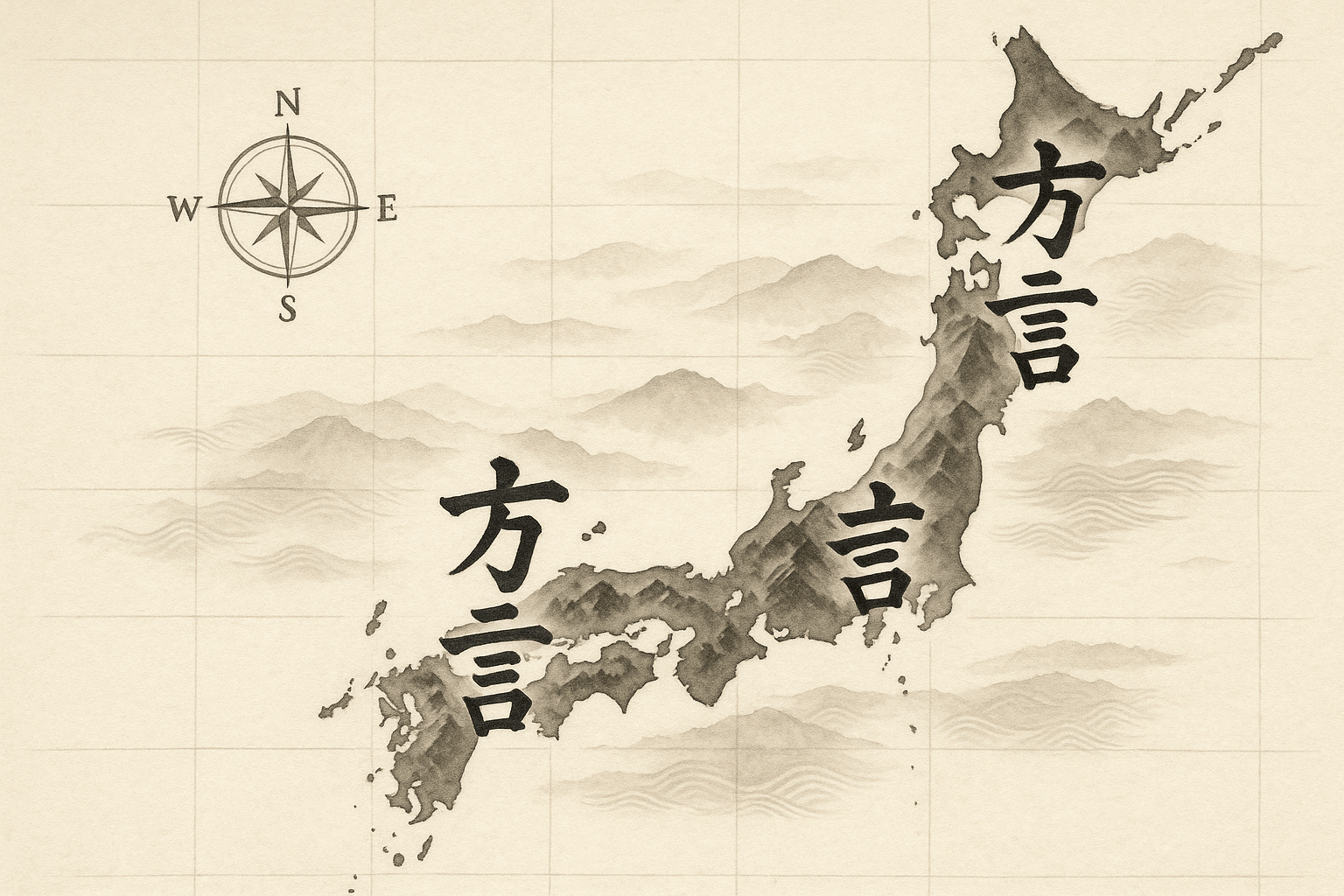Look at a map of Japan, and you’ll see a nation defined by its geography. A long, slender archipelago, its back braced by a spine of volcanic mountains, and its shores endlessly washed by the Pacific. This dramatic landscape isn’t just a picturesque backdrop for temples and skyscrapers; it is a fundamental force that has molded, stretched, and compressed the Japanese language over centuries. From the rugged accents of northern farmers to the intricate verbal dance of a Tokyo business meeting, the echoes of Japan’s geography are everywhere.
The Archipelago Effect: A Sea of Dialects
Japan is not a monolith. It is a chain of over 6,800 islands stretching more than 3,000 kilometers from the Sea of Okhotsk to the East China Sea. For most of its history, this separation wasn’t just a line on a map—it was a formidable reality. Travel between islands, or even between distant coastal communities on the same island, was a difficult and often dangerous undertaking. This physical isolation became a linguistic incubator.
Like species evolving on separate islands, regional varieties of Japanese, known as 方言 (hōgen), flourished. Instead of a single, uniform language, a rich tapestry of dialects emerged. A traveler from Tokyo might find the speech of someone from Kagoshima in the far south almost unintelligible. The differences aren’t just minor quirks in pronunciation; they can involve entirely different vocabulary, grammar, and intonation.
Perhaps the most famous dialect is Kansai-ben (関西弁), spoken in the region of Osaka, Kyoto, and Kobe. Where a Tokyoite would say “ありがとう” (arigatou) for “thank you”, a person from Osaka would say “おおきに” (ookini). The standard sentence ender “〜です” (desu) becomes “〜や” (ya). This dialect reflects the region’s history as a vibrant cultural and commercial hub, a rival to the political center of Tokyo (formerly Edo).
In the far north, the Tōhoku-ben (東北弁) of the Tōhoku region is famously difficult for outsiders to comprehend, to the point it’s sometimes jokingly called “Zūzū-ben” for its characteristic sound. This dialect’s distinctiveness is a direct product of the region’s historical remoteness, harsh winters, and mountainous terrain, which kept communities turned inward for generations. At the opposite end of the country, the Ryukyuan languages of Okinawa and its surrounding islands are so different that linguists classify them not as dialects of Japanese, but as distinct, related languages in the Japonic family—a testament to centuries of geographical and political separation as the former Ryukyu Kingdom.
Carved by Mountains: Linguistic Pockets in the Valleys
It’s not just the sea that divided Japan; the land itself did the job. Over 70% of the country is mountainous, a rugged topography that carved the habitable land into a series of isolated pockets. Before modern tunnels and highways, a single mountain range was as effective a barrier as a strait of water. Communities living in adjacent valleys might have had very little contact with one another.
This “on-land island” effect created incredible linguistic diversity on a micro-level. A specific verb form or a unique word for a local plant might exist in one village but be unknown just a few kilometers over the next ridge. These mountains acted as a linguistic fortress, preserving older forms of the language that had disappeared elsewhere or allowing new, hyper-local variations to evolve undisturbed. The famous folklorist Yanagita Kunio dedicated his work to mapping these dialectal variations, showing how the spread of a word would often stop abruptly at a mountain range or a river, creating a literal map of linguistic geography.
The Urban Pressure Cooker: Politeness in Crowded Plains
While much of Japan is rugged and untamed, its population is overwhelmingly concentrated in a few massive, flat coastal plains. The Kantō Plain (home to Tokyo and Yokohama) and the Kansai Plain (Osaka, Kyoto, Kobe) are two of the most densely populated areas on Earth. This intense human geography—millions of people living and working in close proximity—has exerted its own powerful pressure on the language.
In a society where physical space is a premium, linguistic space becomes critical for maintaining harmony. This is arguably the primary driver behind Japan’s famously complex system of honorifics, or 敬語 (keigo). Keigo is far more than just saying “please” and “thank you.” It’s a sophisticated grammatical system that precisely calibrates the social distance between speakers.
The system is broadly divided into three categories:
- 尊敬語 (Sonkeigo): Respectful language used when speaking about someone of higher status (e.g., a boss, a customer, an elder). It elevates the other person by using special verbs and prefixes.
- 謙譲語 (Kenjōgo): Humble language used when speaking about oneself or one’s own group to someone of higher status. It lowers the speaker to show deference.
- 丁寧語 (Teineigo): Polite language that doesn’t hinge on hierarchy but is used in formal situations or with strangers to show a general level of courtesy. This is the “-desu/-masu” form most learners encounter first.
Mastering keigo is essential for navigating Japanese society. It is the social lubricant that prevents friction in crowded subways, packed offices, and dense neighborhoods. By clearly defining relationships and showing respect through language, individuals can maintain a comfortable social distance even when they are physically close. This linguistic structure is a direct response to the geographical reality of urban density. It’s a tool for survival in the human geography of the Japanese megalopolis.
A Language Shaped by Land and Sea
The Japanese language is a living artifact, shaped by the same forces that created its islands and raised its mountains. The isolation of the archipelago and its valleys fostered a rich diversity of dialects, while the crushing density of its plains necessitated a language of exquisite social precision. To understand Japanese is to understand its geography. It’s a reminder that language is not an abstract system, but a deeply human tool, forged in the unique crucible of the landscape its speakers call home.
